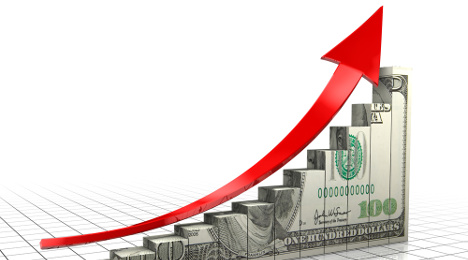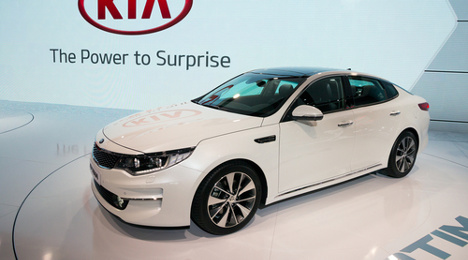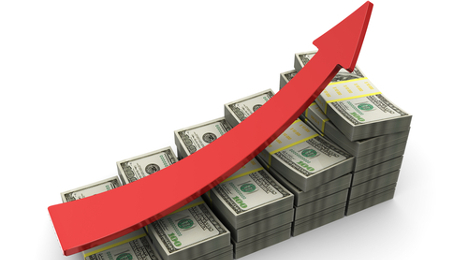Group 1 Automotive established a new record gross profit per unit through its F&I department during the second quarter. But softened used- and new-vehicle sales in areas where the bulk of its dealerships are located — Texas and Oklahoma — left a significant impact on the dealer group’s top-line performance.
According to its latest financial statement released on Thursday, on a same-store basis, the company’s U.S. revenues came in at $2.1 billion in Q2, a year-over-year decrease of 2.7 percent. Total same-store gross profit was essentially flat. Group 1 explained the revenue decrease reflects 5.7 percent and 4.9 percent declines in same-store retail new and used unit sales, respectively.
Group 1 stores retailed a 25,202 used vehicles in Q2, down from 26,856 units during the same quarter a year earlier. The dealer group wholesaled 2.4 percent more vehicles in Q2, sending 9,701 units through those channels. That’s up from 9,476 units in the year-ago period.
As mentioned, Group 1 stores generated a 5.4 percent or $86 increase in F&I gross profit per unit to post a new company record at $1,688.
And while U.S. same-store parts and service revenue increased 5.6 percent, “these factors were not enough to offset ongoing weakness in vehicle sales in our energy-price-impacted markets. Combined new and used sales dropped 7 percent in the quarter for our Texas and Oklahoma stores,” said Earl Hesterberg, Group 1’s president and chief executive officer.
“Our single largest market of Houston was extremely volatile in the second quarter, with Houston total industry auto sales dropping 24 percent in June after an increase in May,” Hesterberg continued. “Group 1's Houston sales only decreased 12 percent in June, but this is indicative of the headwinds we continue to face in much of Texas and Oklahoma.”
In other company news, Group 1 also announced it has acquired its first Jaguar and Land Rover dealerships in the U.S., which are located in Albuquerque and Santa Fe, N.M. Management indicated the stores have projected annualized revenues of $40 million.
The addition of these two stores expands the company's global network to seven Land Rover and seven Jaguar franchises. The dealerships, which operate as Jaguar Land Rover Albuquerque and Land Rover Santa Fe, are the only Jaguar and Land Rover dealerships in the state of New Mexico, and expand the company’s presence to 15 states in the U.S.
The second-quarter dealer survey orchestrated by KeyBanc Capital Markets confirmed how used-vehicle and F&I performances are helping to pick up the slack dealerships might be experiencing within the new-car operations.
The report shared this week with Auto Remarketing indicated trends in F&I gross profit per unit maintained a favorable trend with 86 percent of respondents reporting intact results in June or even increasing figures by more than $50 year-over-year).
For the full quarter, 90 percent of participating dealers noted flat or increasing gross per unit coming out of their F&I offices as 51 percent reported an increase and 39 percent reported flat results. The remaining 10 percent acknowledged a decline, according to KeyBanc’s report.
When it comes to used vehicles, KeyBanc determined the responses “remained mixed” when reviewing gross per unit on used deliveries. In June, 29 percent of respondents enjoyed a year-over-year increase of more than $50 while that same amount sustained a decline of at least $50. The remaining amount of dealers surveyed reported a “relatively intact trend.”
Looking at the full second quarter, KeyBanc found that the trend wasn’t much different, with 37 percent reporting an increase, 29 percent reporting a decline, and 34 percent reporting unchanged gross per unit for used-vehicle turns.
Meanwhile, the report pointed out that surveyed dealerships “faced renewed pressure” when it came to grosses on new-vehicle sales. A total of 86 percent of respondents reported a decline of more than $50 in July compared to this time last year.
For the full second quarter, 60 percent of respondents reported weakness in the segment, KeyBanc said.
“While we believe sales will pick up in the back half of the year, the risk appears to be to the downside,” KeyBanc added.
Also of note, the report added that parts and service gross margins remained intact, according to survey results. A consistent majority of respondents — 71 percent in June and 72 percent for the full quarter — reported a 100 basis points or more increase in parts and service gross profit margin.
Analysts closed the latest survey report by mentioning how trends spotted involving used- and new-vehicle sales is likely to continue since the amount of off-lease units available is high.
“We believe as inventory of attractive, late-model low-mileage used vehicles continues to increase, we will continue to see some new car buyers shift into the late-model used vehicles,” they said.
Dashboard Dealership Enterprises has redesigned its business analytic reporting suite for increased functionality using input from dealer clients.
Executive Eye 3.0, the latest version of Dashboard’s flagship product, offers a variety of graphic display options designed to help dealers easily navigate the program.
New visual enhancements include updated colorful themes, more white space and increased organization.
"Reporting has always been clunky, time consuming; often it’s difficult for dealers to understand how numbers translate into actionable data," Dashboard Dealership Enterprises chief executive officer Josh Blick said in a news release. "Executive Eye 3.0 is a groundbreaking tool that completely changes the paradigm of how a business analytic reporting tool can be used. Instead of spending time compiling reports, managers instantly have actionable data at their fingertips."
In beta testing, Executive Eye 3.0 exhibited a 30 percent increase in dealership usage compared to an average usage of 2.0, according to Dashboard.
The suite’s direct messaging capabilities allow dealers to communicate directly with Dashboard's customer support and other users. The messaging tool’s reports, alerts and comments can all be shared without the need to compose emails outside of Executive Eye.
Additionally, Executive Eye’s Consolidated Doc report allows dealers to instantly combine documents from individual stores into a single report.
Dealers interested in performance comparison can also view key performance indicators from each of their stores side-by-side.
Executive Eye 3.0 is mobile-friendly across all platforms and devices. A mobile application download is not needed to access the software on a mobile device.
Carvana founder and chief executive officer Ernie Garcia is confident that the online used-vehicle retailer will have turned at least 10,000 units by the time the second quarter closes at the end of the month. And Garcia is upbeat that the gross profit per unit will be about $1,400.
“The path to profitability is clear,” Garcia told investment analysts when Carvana hosted its first quarterly conference call as a publicly traded company on Tuesday. “The strength of the demand we are seeing with end markets and our ability to open new ones provides most of the fuel necessary to enable our total GPU (improvement). The brand we have built is powerful. Our website and brand assets like the vending machine make a strong impression and tell a clear story to our customers.
“We are executing,” he continued. “We are a 4-year-old company and have achieved this scale in this timeframe because we are comprised of a group of people that believe in what we are doing and that pour themselves into delivering incredible customer experiences every single day. I couldn't be prouder to call myself a part of that group. We are well positioned. My view isn't that customers are just now becoming ready to buy cars online. My view is that customers have been ready for a while, but the right product hasn’t been available to them and that demand has remained waiting.
“I believe this is because building an easy-to-use ecommerce platform that lives up to the expectations of customers is very hard and requires expertise in many different areas. If it is hard the first time, it will also be hard to replicate,” Garcia went on to say as a part of his opening comments.
While Carvana posted record revenue in Q1, its net losses spiked, too. But later in the call, Garcia pointed out the strikes Carvana is making in gross profit per unit. Back in 2014, the company lost about $200 per unit on average. A year later, Carvana improved to about $200 in positive gross. Last year on average, Carvana said that gross profit rose to roughly $1,000.
The math then isn’t too complicated. If Carvana turns 10,000 units and the gross averages out to be $1,400, that computes to $14 million.
Garcia closed the call with a message directly to his employees.
“To everyone on team Carvana out there, thank you for everything you’ve done to get us here. Achieving these goals relies on nothing more than us executing on our plan. Let's do it and let's have fun along the way,” he said.
Inventory levels
With the expectations of retailing 10,000 units in Q2 and perhaps 44,000 to 46,000 for the year, investment analysts wondered if Carvana’s inventory strategy put the company in place to hit those targets. Currently, Carvana holds about 7,500 units in inventory that’s spread throughout the 29 markets where it operates.
“So the way I would think about that is I think we still believe that there are gains in conversion rates to be had by growing inventory from here,” Garcia said. “We believe that those gains are less pronounced than they were when our inventory was smaller. And so the balance of growing inventory and growing conversion versus recognizing higher gross margins by holding a smaller inventory turning cars faster has shifted to where we now have more of a focus on driving down average days to sale and driving up GPU. So you can expect to see that going forward.
“We do expect also to be growing inventory over that timeframe,” he continued. “Over the next several years, we don’t expect it to be completely flat. And then in terms of where that could go, I think if you look at other retail models across the board, you see kind of 30 to 60 days is probably the average window of average days to sale that you see for other groups out there.
“I think our medium term goal is to get in line with traditional retailers and I think from there, there is certainly upside,” Garcia added.
Financing update
Chief financial officer Mark Jenkins noted that approximately 70 percent of site buyers use Carvana financing to complete their purchase. Carvana made arrangements with several finance providers to help move metal, including Ally Financial and Randolph-Brooks Federal Credit Union (RBFCU).
“That’s a number that we’re very proud of,” Jenkins said in reference to that 70 percent penetration rate. “I think a number that’s enabled by the technology that we build that provides a very seamless experience to customers who could very easily fill out a credit application form on their phone or desktop and then select from a wide variety of financing options that we make available in a very transparent way.”
Online used-vehicle retailer Carvana highlighted that its first-quarter revenue soared to a new record, increasing by 118 percent year-over-year.
Unfortunately, the record revenue figure of $159 million wasn’t enough to overcome the company’s expenses that resulted in Carvana sustaining a net loss of $38.4 million, representing an increase of 122 percent.
Still, with improvements in the number of units retailed and gross profit per unit, Carvana leadership remains upbeat about its future as a publicly traded company that caters to online-savvy vehicle purchasers.
“We are excited to announce record revenue in our first earnings report as a newly public company. Our strong performance this quarter reflects a significant increase in retail units, as well as expansion into new markets. During the quarter we made important enhancements to the customer experience through new product development, resulting in ongoing optimization from website through vehicle delivery,” Carvana founder and chief executive officer Ernie Garcia said when the company released its financial report late on Tuesday.
“We continue to see increased consumer adoption of online car buying across our markets, charting a clear path to consistent growth within the $710 billion U.S. used auto market. Carvana’s unique business model includes proprietary technology and assets, like the vending machines, that deliver customer experiences that position us to execute against our aggressive growth plans,” Garcia continued.
The company reported that it retailed 8,334 vehicles during the first quarter, an increase of 120 percent year-over-year. Carvana’s total gross profit per unit was $1,169, an increase of $123 per unit.
And the company’s total gross profit for the quarter came in at $9.7 million, a spike of 146 percent. Still, Carvana’s net losses have gone from $17.3 million in the year-ago quarter to $35.7 million in the closing quarter of last year to above $38 million in Q1.
Looking ahead, Carvana shared expectations for its second quarter; forecasted metrics that included:
• Retail unit sales of 10,000 to 10,500
• Total revenue of $193 million to $203 million
• Total gross profit per unit of $1,375 to $1,425
And the company went on to give predictions of what it might generate for the full year, including:
• Retail unit sales of 44,000 to 46,000, an increase from 18,761 in 2016
• Revenue of $850 million to $910 million, an increase from $365 million in 2016
• Total gross profit per unit of $1,475 to $1,575, an increase from $1,023 in 2016
• 16 to 18 new market openings, bringing the company’s end of year total to 37 to 39
And on Wednesday, Carvana announced the company added two more markets in Georgia, bringing aboard Augusta and Macon.
Along with two new additions in the Peach State, Carvana operates in 29 markets:
—Atlanta
—Austin, Texas
—Birmingham, Ala.
—Charlotte, N.C.
—Chicago
—Cincinnati
—Cleveland
—Columbia, S.C.
—Columbus, Ohio
—Dallas
—Greenville, S.C.
—Hampton Roads, Va.
—Houston
—Indianapolis
—Jacksonville, Fla.
—Memphis, Tenn.
—Miami
—Nashville, Tenn.
—Orlando, Fla.
—Philadelphia
—Pittsburgh
—Raleigh, N.C.
—Richmond
—San Antonio
—St. Louis
—Tampa, Fla.
—Washington, D.C.
Editor’s note: Watch for an upcoming report from Auto Remarketing featuring more comments from Carvana leadership about its Q1 performance and future expectations.
Kia Motors America said that last month's certified pre-owned sales marked its best April ever and more than a 5-perecent increase. And this, right after Kia had its best first quarter ever for CPO.
Last month, Kia sold a 6,953 vehicles, which was up 5.6 percent year-over-year. CPO sales have risen 14 percent year-to-date, reaching 26,406 units, according to Autodata Corp.'s April CPO retail sales report.
"Kia's record CPO sales are not surprising when you consider Kia offers the longest powertrain coverage, excellent financing incentives and a strong inspection process," IntelliChoice director of data products Eric Anderson said in a news release. "This is why IntelliChoice awarded Kia the best popular brand CPO program."
Kia’s CPO program only accepts Kia vehicles that are five years old or newer with less than 60,000 miles, according to KMA. Each vehicle also undergoes a 150-point quality assurance inspection by certified technicians.
Additionally, KMA said all Kia CPO purchases come with a 10-year/100,000-mile powertrain limited warranty and 12-month/12,000 mile Platinum Coverage.
When it comes to used-car prices, the sky might not be falling after all, if indications from a Manheim report bear out.
The auction company’s index measuring used-car prices increased for the first time all year, and the used retail market buzzes along at a solid clip.
The Manheim Used Vehicle Value Index came in at 124.7 in April, which was up 1.6 percent year-over-year. According to a report accompanying the index, wholesale prices climbed 0.5 percent from March on a mix-, mileage- and seasonally adjusted basis.
In an analysis accompanying the index, Cox Automotive chief economist Tom Webb downplayed the concern many analysts have expressed about used-car price declines.
“Although the Manheim Used Vehicle Value Index increased for the first time this year on a month-over-month basis, used-vehicle values have not collapsed the way many analysts have warned of for more than a year due to expected increases in wholesale supplies,” Webb said. “And in fact, what weakness we have seen is probably more a result of excessive new-vehicle inventory, not used.”
Edmunds executive director of industry analysis Jessica Caldwell echoed some of that new-car inventory concern in monthly sales day comments provided by the company.
“We’re seeing a dramatic lag in the 2016 model-year selldown. In April, 8 percent of vehicles sold were 2016 models, up from only 3 percent five years ago,” Caldwell said. “Inventory buildup is a top concern of automakers and all eyes are on whether cuts in production are enough to offset expected dips in sales.”
Black Book index shows rare gain, too
Another one of the indices measuring wholesale vehicle values has seen its first increase in 27 months.
While the April reading of Black Book’s Used Vehicle Retention Index (113.1) was just a hair above March’s (113.0), it’s at least a temporary pause to the gradual downturn that has been ongoing since January 2015.
The index, which is based on Black Book wholesale average values on 2- to 6-year-old vehicles, was at 126.8 that month before sliding for more than two years.
“April saw stronger seasonality trends than what we had been seeing during the last few spring seasons,” Black Book’s Anil Goyal said in a news release accompanying the monthly Used Vehicle Retention Index.
“There certainly remains a growing concern over rising supply levels, which typically leads to higher depreciation, but with prices on some segments seeing better value, consumers may be more willing to consider used vehicles in some key car segments.”
Spring has been more robust than anticipated, and the strength in car retention has been encouraging, says a spokesperson for the company via email when asked for Goyal's take on whether April was temporary relief or an encouraging sign.
However, prices are likely to move back into the usual summer depreciation, the spokesperson said.
Used-car retail appears strong
Moving over to retail, Webb — citing data from NADA — said that used-vehicle retail sales (including private sales) climbed 3.6 percent in the first quarter, with dealer sales up even more (5 percent for franchised, 5 percent for independents).
It appears April continued the momentum, based on Cox Automotive’s “channel checks.”
In late April, Edmunds was forecasting 3.6 million used-car sales for the month, up from 3.4 million in March, with a SAAR of 38.4 million for both months.
Meanwhile, ALG was forecasting 3.32 million used-car sales for April, which would have been off 0.8 percent year-over-year.
Along with sharing some of its first-quarter sales and loss projections, online used-vehicle retailer Carvana late on Thursday announced the pricing of its initial public offering of 15 million shares of its Class A common stock at a price to the public of $15 per share.
The company said in its latest filing with the Securities and Exchange Commission that the action should yield proceeds of approximately $210.7 million or $242.0 million if the underwriters exercise their option in full to purchase additional shares of Class A common stock.
The shares began trading on the New York Stock Exchange on Friday under the symbol CVNA. The offering is expected to close on May 3, subject to customary closing conditions.
"We are honored to celebrate this milestone with our employees who have worked so hard to help us build a great car buying experience for consumers," Carvana chief executive officer and co-founder Ernie Garcia said in a news release.
"We're excited for our future, and what it holds for our company and millions of car buyers across the country," Garcia added.
Carvana has granted the underwriters a 30-day option to purchase up to 2,250,000 additional shares of Class A common stock.
Wells Fargo Securities, LLC, BofA Merrill Lynch, Citigroup Global Markets Inc. and Deutsche Bank Securities are acting as joint book-running managers for the offering. Robert W. Baird & Co., William Blair & Co., BMO Capital Markets Corp. and JMP Securities are acting as co-managers.
“We estimate, based upon an assumed initial public offering price of $15 per share (which is the midpoint of the estimated public offering price range set forth on the cover page of this prospectus), we will receive net proceeds from this offering … after deducting estimated underwriting discounts and commissions but before deducting estimated offering expenses payable by us,” the company said in the SEC filing.
“We intend to contribute the net proceeds to our wholly owned subsidiary, Carvana Sub, that will in turn acquire 18,750,000 newly-issued LLC Units (or 21,562,500 LLC Units if the underwriters exercise their option in full to purchase additional shares of Class A common stock) in Carvana Group,” the company continued.
“In turn, Carvana Group intends to apply the net proceeds it receives from us to repay all outstanding borrowings under the Verde Credit Facility, to pay expenses incurred in connection with the organizational transactions and for general corporate purposes,” the company went on to say.
“Carvana Sub will also transfer approximately 170,000 LLC Units to Ernest Garcia, II (assuming an initial public offering price of $15 per share, which is the midpoint of the estimated public offering price range set forth on the cover page of this prospectus) in exchange for his 0.1 percent ownership interest in Carvana,” the company added.
Carvana’s filing also touched on its current dividend policy
“We currently intend to retain any future earnings for investment in our business and do not expect to pay any dividends in the foreseeable future,” the company said. “The declaration and payment of all future dividends, if any, will be at the discretion of our board of directors and will depend upon our financial condition, earnings, contractual restrictions, or applicable laws and other factors that our board of directors may deem relevant.”
Expected Q1 performance
As previously mentioned, Carvana revealed some of its expected performance metrics from the first quarter.
During the three-month span that concluded on March 31, the online retailer said in the SEC filing that its projected retail sales would fall between 8,250 and 8,350 units. In the year-ago quarter, Carvana indicated its retail sales totaled 3,783 units.
Carvana attributed the sales growth in part to its market growth. The company operated in 11 markets during the first quarter of last year and in 23 markets in the opening quarter of this year.
“This increase in unit sales was also driven by growth in existing markets due to expanded inventory selection, enhanced marketing efforts, increased brand awareness and customer referrals,” Carvana said in the SEC filing.
The growth in vehicle turns pushed Carvana’s expectation for total net sales and operating revenues to be between $157.3 and $159.3 million, as compared to total net sales and operating revenues of $73.0 million in Q1 of last year.
“The increase in total net sales and operating revenues was primarily the result of the increase in unit sales,” the company said.
And perhaps the metric that might pique the interest of much of the used-vehicle industry, Carvana said it expects Q1 total gross profit to be between $9.3 million and $9.8 million, as compared to total gross profit of $4.0 million in the year-ago period.
“The expected increase in gross profit is primarily due to increased unit sales and increased used vehicle gross profit per unit, which was primarily driven by enhancements in our proprietary vehicle purchasing, pricing and logistics technology,” the company said in the SEC filing.
Despite that gross profit jump, Carvana acknowledged that total net losses are projected to rise year-over-year.
For the first quarter, the online retailer said in the SEC filing that its total net loss should be between $39.3 million and $38.3 million, as compared to total net loss of $17.3 million for the three months of 2016.
“The expected increase in net loss is primarily due to an increase in selling, general and administrative expenses associated with expansion to additional markets and investment in infrastructure and headcount to support our growth,” Carvana said.
Kia Motors America's certified pre-owned vehicle sales program achieved a record-high first quarter, having sold a total of 19,453 units.
Along with several other automakers, last year was also a best-ever CPO year for Kia, selling a total of 76,224 units in 2016.
"Kia's sales boost is reflective of the confidence that comes with buying a vehicle that has passed a rigorous inspection and helps consumers establish a long-term relationship with the brand," the Seoul-based automaker said in a news release.
According to Autodata’s March CPO retail sales report, Kia continues to outdo the industry with an overall notable 17.3 percent increase year-over-year for Q1.
In an Auto Remarketing report from January, Maria Williams, Kia's senior CPO retail support manager, said Kia's certified sales have climbed each year since the automaker partnered with JM&A Group to help build its certified pre-owned program.
Kia’s program administered by JM&A Group only accepts vehicles up to five years in age with fewer than 60,000 miles on the odometer and every vehicle undergoes a 150-point Quality Assurance inspection by certified Kia technicians.
According to Williams, the program with JM&A Group was launched in 2008, and is targeting another growth year in 2017.
Additionally, Kia's CPOs also come with a 10-year/100,000-mile powertrain limited warranty as well as 12-month/12,000 mile-Platinum Coverage, according to KMA.
"Certified pre-pwned vehicle programs tap into the best attributes from both the new and used worlds," Edmunds executive director of industry analysis Jessica Caldwell said in a news release. "For consumers who might be uneasy about buying used, CPO vehicles offer lower prices than a new car coupled with a warranty that provides peace of mind about wear and tear."
Penske Automotive Group posted a used-vehicle performance lift during the first quarter thanks in part to the addition of U.S.-based CarSense and U.K.-based CarShop, both of which are stand-alone specialty retailers of used vehicles.
During Q1, Penske reported these used-vehicle dealerships retailed 8,200 units, generating $143.1 million in revenue and $24.6 million in gross profit. The average transaction price was $14,372, generating a gross profit per unit of $1,382. Finance and insurance gross profit per unit was $1,147.
All told, according to the financial statement Penske released on Wednesday, the dealer group retailed 62,284 used units during the first quarter. A year earlier, the figure came in at 52,741 units.
On a same-store basis, however, Penske sustained a slight softening in used-vehicle retail sales as that metric was 51,852 units.
Gross profit on used retail sales on a same-store basis also ticked a bit lower year-over-year as Penske reported the Q1 figure at $1,549, down from $1,601 a year earlier.
However, F&I gross profit per unit improved a bit year-over-year when looking at the same-store data, edging up to $1,123 from $1,066.
Overall, Penske reported that its first quarter included record revenue, income from continuing operations and earnings per share.
The dealer group said Q1 income from continuing operations attributable to common shareholders increased 4.9 percent to $83.2 million, and related earnings per share increased 7.8 percent to $0.97, when compared to the same period last year.
Penske acknowledged foreign exchange negatively impacted income from continuing operations attributable to common shareholders by $7.5 million, and earnings per share attributable to common shareholders by $0.09.
Excluding the foreign exchange impact, the company explained income from continuing operations attributable to common shareholders would have increased 14.4 percent to $90.7 million and earnings per share would have increased 17.8 percent to $1.06.
The company added total revenue increased 5.3 percent to $5.1 billion, but same-store retail revenue declined 2.2 percent. Foreign exchange rates negatively impacted revenues by approximately $287.6 million.
Excluding the foreign exchange impact, total revenue would have increased 11.3 percent to $5.4 billion and same-store retail revenue would have increased 3.7 percent, according to the company.
Penske Automotive Group chairman Roger Penske said, “Our diversified transportation services business delivered another outstanding quarter of record results despite foreign currency headwinds. I am pleased to see increases in average gross profit per transaction for new vehicles, used vehicles and finance and insurance when excluding the impact from foreign exchange, coupled with another strong quarter of record results by our U.K. business.
“As we look to the future our recent acquisitions combined with the continued performance of our existing business provide a solid foundation for growth and profitability,” he went on to say.












